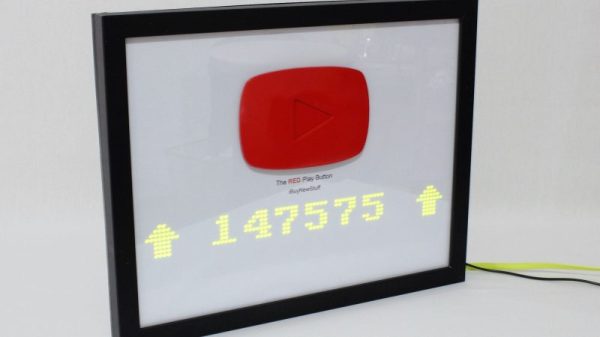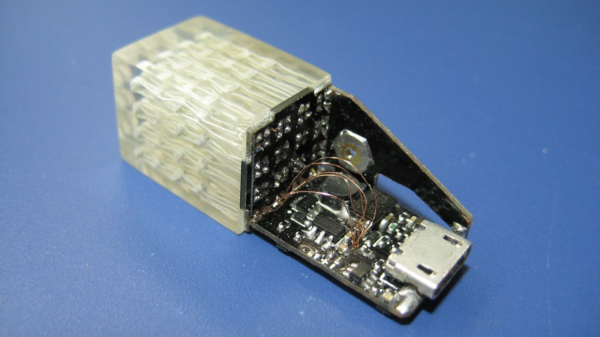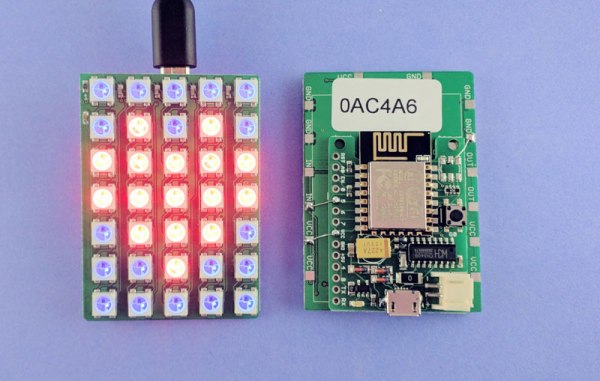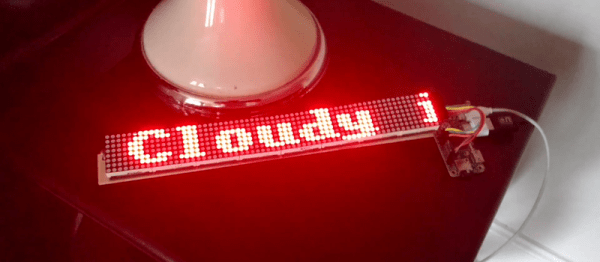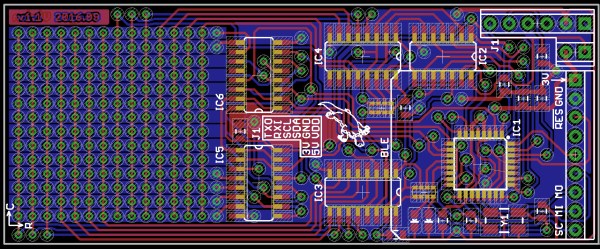Professional YouTubers live and die by the number of subscribers they have. It seems like a brutal way to make a living to us, but to each his own. Still, if you’re going to do it, you might as well do it right, and keeping track of how you’re doing with this Play Button Award subscriber counter might make sense. Or it might drive you nuts.
YouTuber [ibuynewstuff] has reached the vaunted 100,000 subscriber mark, the number required to earn the Silver Play Button award. Sadly, 100k is the bare minimum needed to get YouTube’s attention, and tales of waiting for months for the award to arrive are not uncommon. [ibuynewstuff] worked around the issue by 3D-printing his own temporary play button badge. Mounted to a picture frame with an ESP8266 and an 8 x 80 LED display behind a diffuser, [ibuynewstuff] can keep track of his progress toward the Gold Play Button award at 1,000,000 subs. Hopefully, his Silver award will arrive before then.
Want to replicate this but would rather have something a little more permanent than a plastic play button? Try casting your own Copper Play Button award.
Continue reading “Count YouTube Subscribers With This Red Play Button Award”

